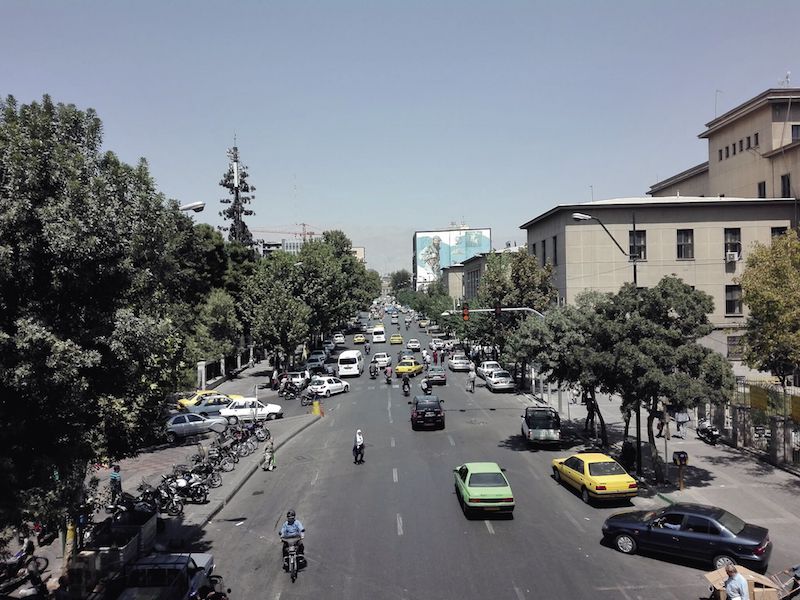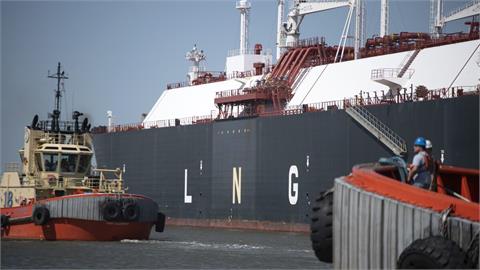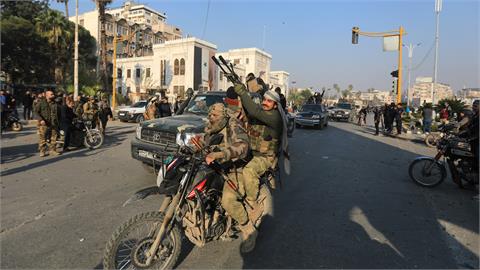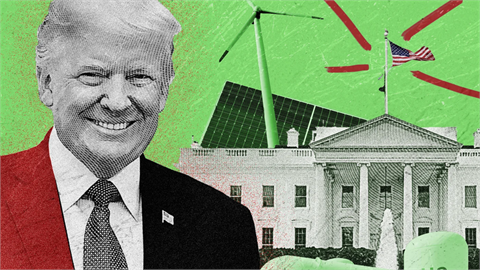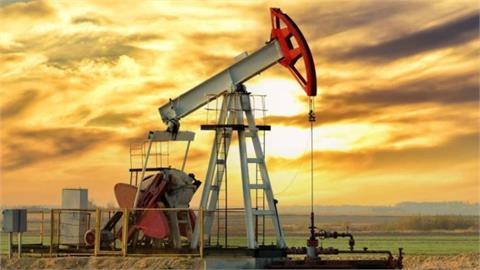It takes just four hours to fly from Vienna to Tehran, Iran’s capital. Four hours separating the city ranked number 1 in Mercer’s Quality of Living ranking, and a city ranked 203 (out of 230 leading world cities). Iran certainly puts the ‘Middle’ in the Middle East. It sits at the heart of this tumultuous region, but is surprisingly close to Europe in geographical terms, if not in political or theological ones.
Decades of U.S. and UN-imposed sanctions, applied as a response to the seizing of the U.S. embassy in 1979, have hurt Iran economically, but the country’s suffering came from a relatively comfortable base. Prior to the 1979 Revolution, Iran was a progressive, modern, and open society, and even today it is considered a middle-income nation.
The UN sanctions were lifted on January 16, 2016, and since that date Iran has increasingly been seen as "open for business,” with a slow trickle of foreign companies beginning to dip a toe into unknown waters. However, this is easier said than done. Although a handful of European companies have explored opportunities in construction, energy, and renewables in Iran, the blockade of foreign banking operations makes it extremely difficult to get capital and goods into the country.
Whether an intrepid Western tourist venturing to the historic cities of Isfahan and Shiraz, or a European businessperson partnering with Iranian firms to create a joint venture, the simple inability to use any Western debit or credit cards in Iran also poses unprecedented challenges. Tourists are told to bring in cash, preferably euros, and exchange that at hotels. But for potential business ventures, things are that much trickier.
The allure of solar
The year in Iran is 1396. It is one of only three countries in the world that does not use the Gregorian calendar (the other two are Afghanistan and Ethiopia). It is perhaps apt that Iran follows the Solar Hijri calendar, where New Year’s Day falls on the March equinox, because the sun has long exerted a strong influence over Iranian society.
A common sight across much of Iran today is the windtower, which is a traditional Persian architectural element designed to create natural ventilation in buildings and settlements. The climate of Iran’s central desert is harsh, with more than 330 sunny days a year, and so the people of the region have created many ingenious ways to live comfortably with the incessant sunshine and heat.
A modern-day solar irradiation map of Iran is dappled with the deep, dark reds that typically denote high levels of sunshine. Much of the bottom half of the country sees more than 2,200 kWh/m2 of solar radiation annually, making Iran a potential gold mine for solar PV developers – particularly given the high altitudes present in this mountainous nation.
Such fertile ground has not gone unnoticed by European developers. In July, a consortium of Spanish, German, and Italian companies worked with Swiss finance provider Ecofinance to build a $44 million, 30 MW ground-mounted solar plant in North Khorasan, northeastern Iran. In the west of the country, two 7 MW solar farms were completed in February by German firm Athos, while a 10 MW solar array was also completed with European assistance near the historic city of Isfahan.
The drip-drip of development may well turn into a rush if plans by Iran’s Renewable Energy and Energy Efficiency Organization (SATBA) come to fruition. The organization, which is a deputy of the Ministry of Energy, in June set a target of developing 5 GW of renewable energy in Iran over the next five years. A similar plan was announced in 2014 but, crucially, this came prior to the easing of sanctions on Iran. Now, the government has made it clear that the entirety of this 5 GW capacity should come via the private sector – and that should mean much more foreign investment.

Incentives on the table
Jafar Mohammadnejad Sigaroudi, planning and development deputy at SATBA, last month in Tehran told a press delegation, which included pv magazine, that a chief aim of Iran’s Ministry of Energy is to use attractive incentives to lure the private sector to support its renewable energy ambitions.
Specifically, this means the application of a feed-in tariff (FIT) modelled on the successful FITs introduced in Germany and Spain, as well as the extension of power purchase agreement (PPA) contracts from 5 to 20 years.
"We want to continue the process of guaranteed power purchases in Iran through the FIT,” Sigaroudi said. "With this approach, the FIT has supported the installation of 100 MW of renewable energy in the country over the past 12 months, of which 40 MW was solar. In the previous decade, Iran’s total renewable energy capacity reached just 150 MW – so in the space of a year, the private sector almost matched that entire total.”
SATBA hopes to reach a renewable energy capacity of 600 MW by March next year, of which 60% is to be derived from solar installations. Only by attracting sustained and bold foreign investment can these goals be reached, but SATBA at least appears aware of what is required to nurture an attractive investment climate for overseas firms.
Around a table in the bowels of the Austrian Embassy in Tehran last month sat representatives from Austrian solar EPC KPV Solar, Austrian module manufacturer Kioto Solar, and Austrian inverter specialist Fronius. The three companies have collaborated on the construction of a 1.2 MW solar farm in Kerman, south central Iran, and hope to build a further 60 MW of solar farms within the next 12 months, pv magazine learned.
Klagenfurt-headquartered KPV Solar created a joint venture (JV) with Kerman-based EPC contractor Mehrabad Renewable Energy Co. in order to obtain a construction license – one of three routes to market in Iran for foreign companies, SATBA confirmed.
"The other ways are to establish a foreign company in Iran, or open up a branch in the country and apply via that channel,” explained Sigaroudi.
For
KPV Solar, the generous FIT offered by SATBA overrode any other
concerns about doing business in Iran. Solar farms with a capacity of 10
MW or less are eligible for a FIT of
IRR 4,900/kWh ($0.15). For larger solar farms with a capacity of 30 MW or less, the rate is $0.12/kWh.
"We have based our FIT on the pioneer solar countries,” said Sigaroudi. "Germany’s FIT was a great policy for the country, and we wish to follow the model of an attractive tariff that steadily reduces.”
Calculating the rate of the FIT is based on three main factors, SATBA revealed. The first calculation analyzes how much the implementation of a renewable energy project will cost. Second, the government looks at how much capex can be saved on fossil fuel use. Third, it considers social cost savings, which are calculated by the Environmental Organization of Iran.
For
example, the FIT rate for distributed-generation (DG) solar plants is
far higher, at IRR 7,000/kWh ($0.21/kWh) for rooftop arrays with a
capacity of
100 kW or less, and IRR 8,000/kWh ($0.24/kWh) for rooftop arrays with a capacity of 20 kW or less.

"The Ministry of Energy sells electricity to consumers at IRR 600/kWh, but will purchase solar energy at between IRR 7,000 and
8,000/kWh. That is a big difference, and the hope is that it spurs the uptake of rooftop solar,” Sigaroudi revealed.
Securing investment
SATBA has only recently been placed in charge of Iran’s renewable energy objectives. Previously, the task of building up the country’s solar and wind power landscape fell to SUNA, the Renewable Energy Organization of Iran. This organization was affiliated with the Ministry of Energy, but in the second rate, Sigaroudi tells pv magazine. This meant that it was not operating closely to the ministry and thus was not considered a major authority, lacking the clout to operate independently and set its own budget.
"The development of renewable energy in Iran is not only something that is in the interest of the Ministry of Energy, but also the Parliament of Iran, the environmental organization, and the people,” Sigaroudi said.
"So by the representation and support of 90% of Parliament, it was approved that the renewable energy organization would be combined with energy efficiency and become a deputy of the ministry.”
That last point may well prove crucial in securing sustained foreign investment into the sector, Sigaroudi added.
"Becoming a deputy is a difficult task, but it was in the interest of Parliament that we were to be given more authority in government in order to facilitate the development of renewables in Iran. We now have a five-year development plan that has been approved by Iran’s Supreme leader Ali Khamenei, who has emphasized the development of environmentally friendly energy.”
Most pertinently it means that SATBA now has direct budgetary control for renewables investment, and thus can assure investors that 20-year PPAs are secure for the duration of the contract.
"Our PPA contracts have an index coefficient built in, which calculates internal inflation and currency fluctuations compared to the euro, ensuring that investors receive the agreed-upon, fixed amount of money over the 20 years,” said Sigaroudi.
"This assures investors that from the day the PPA is signed, the tariff is fixed for 20 years, will not fluctuate and is written into law – so even if the government or parliament changes, their investment is secure; nothing will happen to SATBA’s budget.”

SATBA then opens a revolving Letter of Credit (LC) account in Iran for foreign investors, depositing the PPA money into it every six months until the end of the contract.
Another incentive is the 30% higher FIT for solar projects that are built using some locally produced components. Currently, Iran’s solar manufacturing landscape is sparse, but the aim is to encourage domestic and foreign firms to build production sites in Iran, attracted by the generous FIT.
On to Kerman
The 80-minute flight from Tehran to Kerman was surprising in its mundanity. The waiting lounge at Tehran’s Mehrabad International Airport – which these days tends to mostly handle domestic flights, having been usurped in 2007 by the Imam Khomeini International Airport on the outskirts of this sprawling city – has a certain subdued charm, and was refreshingly bereft of the retail assault that awaits one in most European airport lounges.
Aboard the Mahad Air Airbus 3000, the experience is little different to that found elsewhere. Despite the sanctions and Iran’s avowed urge to plow its own path, international safety codes and regulations are obediently adhered to, and it is a smooth journey down into the mountainous desert region of Kerman province, where KPV’s 1.2 MW solar farm awaits, tucked behind a guarded customs barrier in the Special Economic Zone of Rafsanjan.
Economic zones like this are cropping up all over Iran, and provide a pull factor for foreign firms. Activity within these zones is exempt from import and income tax, which effectively amounts to a 25% discount on project development. Customs also offers a government-backed guarantee to companies operating within these zones.
Such
conditions, allied to the excellent solar irradiation, low humidity,
and 1,800-meter altitude, make Kerman an ideal location for solar
development. The region has a population of 11 million and an installed
electricity capacity of
3.3 GW, with plenty of suitable land for further power development.
KPV’s solar farm was installed using Kioto Solar modules and 38 Fronius three-phase 27 kW string inverters. The EPC employed mostly local Kerman staff for the construction of the farm, which was completed in six weeks.

Scattered on the ground between the rows of modules are wide strips of locally quarried white gravel, which was included in the construction phase following a suggestion by the Iranian construction workers, Ramin Dilmaghanian, Yingli Solar Project Director and Advisor on the project, told pv magazine.
"Although the array does not use bifacial technology, the reflectiveness of the white gravel helps boost efficiency while also helping to minimize dust and soiling on the modules,” Dilmaghanian said.
This small but effective improvement to the array is a tangible symbol of the synergy of the two cultures – Austrian and Iranian – working together.
"Business relationships are built on trust,” KPV Solar CEO Gerhard Rabensteiner said. The Austrian company directly supervised and trained the personnel that worked on the array, and hopes to employ them once more in 2017 on the installation of a 10 MW solar farm, also in Kerman. "The second installation has almost secured its construction license,” Rabensteiner added, revealing that a further 50 MW is planned for installation in 2018.
Iran is acutely aware of its responsibilities and reputation in the Middle East. Despite its less-than-favorable image among many Western nations, the country appears to be working hard to not only build bridges internationally, but improve living standards domestically.
SATBA proudly told the assembled journalists that in May Iran celebrated the news that the country no longer has any rural areas that have no access to electricity, meaning that – bar a few nomadic tribes – every Iranian is connected to the grid. By 2020, the country hopes to have 100,000 MW of electricity capacity installed, and is toiling daily to ease business restrictions for foreign firms eager to operate inside Iran.
"Many people ask us what the outcome of the new renewable energy policy will be,” Sigaroudi mused. "That is simple. Over the past year, 47% of all foreign investment in Iran belonged to the renewable energy segment. In real terms this was around $3 billion, just for renewables. This level of investment shows that our FIT, support mechanism, and new policies have proven very attractive for foreign investors.”
* Ian Clover - PV Magazine: Ian specializes in power electronics (inverters) and battery storage and also reports on the UK solar market, having worked as a print and web journalist in Britain for various multimedia companies, covering topics ranging from renewable energy and sustainability to real estate, sport and film.
(www.pv-magazine.com, October 4, 2017)
